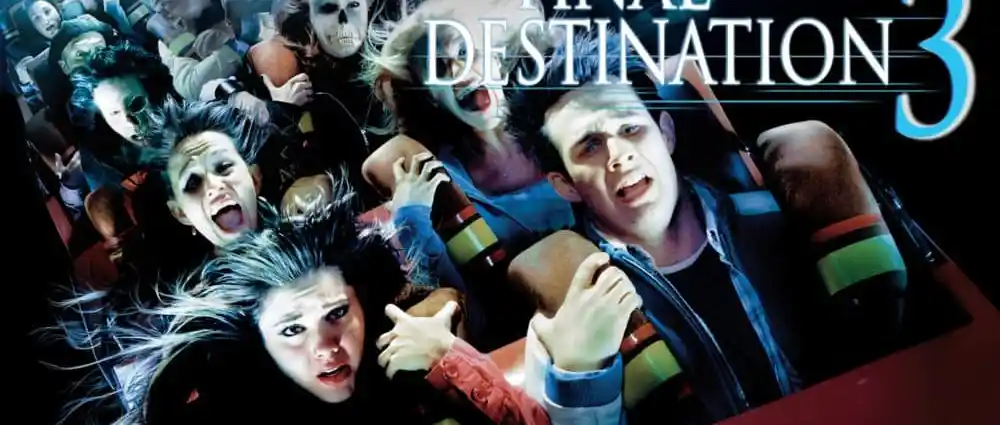It’s strange, but I consider myself more a fan of the Teenage Mutant Ninja Turtles now than I ever was as a kid.
It isn’t that I disliked them as a kid either.
I still have a lot of fond memories growing up of the turtles and their rat sensei Splinter. I never got into the eighties series, but I was a fan of the 2003 series that came later on. I never bought any of the comic books, but I dug the 1990 film a lot as a kid (and, as an adult, I’ve revisited it and it still has its charm). I never got into Turtles in Time, but I played a lot of the Teenage Mutant Ninja Turtles on the Gameboy Advance (I later played the arcade game and had a lot of fun with it, and also revisited the Gameboy Advance games from my childhood, they’re, … uh, they’re pretty basic beat ’em ups, I still hope Konami ports them someday though).
When Teenage Mutant Ninja Turtles: Shredder’s Revenge was released, we witnessed a renaissance for the Turtles in videogames. The videogame offered an experience that paid tribute to Turtles in Time, while also offering a ton of new improvements to the formula. I can definitely say I enjoyed myself and played through the campaign more than a few times with the wife. After that, Konami came out with the Cowabunga Collection, a compilation that brings more than half a dozen old ports to a modern platform. In other words, fans of the eighties cartoon series are eating and eating well. A new port of TMNT Arcade Wrath of the Mutants was released. Basically, it is an arcade beat ’em up taking inspiration from the older Turtles games, but applying the formula to the 2013 animated series and its characters. Unfortunately, the reviews haven’t been too kind to that one though. On the horizon, we know THQ Nordic is working on a videogame adaptation of The Last Ronin and Outright Games has a new videogame based on the Mutant Mayhem movie set for release in October (I am also aware of Outright Games’ reputation for lackluster cash grabs). My point is, for better and for worse, there are a lot of Turtles videogames being released. As a fan, I am hopeful of one day uncovering the breakthrough videogame that earns itself a place on the Black Deck (essentially, the Nickelbib Hall of Fame, for those who are just joining us).
Enter Teenage Mutant Ninja Turtles: Splintered Fate.
What should I say first about Splintered Fate? Well, firstly, that it is an isometric rogue-like developed by Super Evil Megacorp and that it was released exclusively on the Nintendo Switch (I wouldn’t be surprised to see it arrive on other platforms later on, however).
I don’t usually play videogames on my Nintendo Switch, or, as I like to call it, my wife’s Nintendo Switch. I am not a big fan of the interface, controller, and layout, and I’ve never had the attachment to Mario and friends that I had with Sony’s (I do love me some Donkey Kong though). So, when I tell you that I went out of my way to buy Splintered Fate on launch on the Nintendo Switch, that should tell you how much I wanted to love the new game.
Saying that I “wanted to love Splintered Fate” might seem ominous to you. No worries though, in truth, I kind of did love it.
The easiest way to describe what it is like playing Splintered Fate may feel like an oversimplification, but it is an accurate description that will immediately prick the ears of certain players. Rogue-likes fall into certain camps. You have your Dead Cells (a Metroidvania roguelike), Inscryption (a card game roguelike), and The Binding of Isaac (a Zelda-esque dungeon-crawler roguelike), and then, there are the isometric hack-and-slash roguelike games. Hades being the most famous (and the best, by popular opinion and my own), with other solid titles like Dandy Ace and Curse of the Dead Gods being worth looking at. Splintered Fate falls into that hack-and-slash camp. It is … in the plainest terms, “like Hades”.
It offers a long gauntlet to play through, consisting of several bosses and enemies to defeat. Every time your character is defeated, you are brought back to the sewers to start the onslaught all over again. As anyone who is a fan of rogue-likes can tell you, when the concept is done well, playing the same levels repeatedly doesn’t feel too repetitive or tedious to do. The vibe is a little like playing a classic arcade game. When you play Galuga, regardless of how far you’ve gotten or how high of a score you have attained, once you’ve tapped out, you have to take everything back to square one. Of course, in that respect, it is more so the case. You develop pattern recognition and have a better understanding on how the fundamentals of the game play out, but you do start over. In Splintered Fate, you also have the benefit of experience, but the coins you have collected on your journey can be spent to upgrade your character in various ways. You can raise your attack, unlock new special abilities, increase your health, and even unlock extra lives if you save up enough. No matter the outcome, you find yourself a little better off than you were before it.
The game play is fun.
As you can imagine, the Ninja Turtles lend themselves perfectly to the hack-and-slash rogue-like concept. The game-play is fast-paced and chaotic, with easy-to-use controls that will feel intuitive to most players. The boss battles are distinct, and are characters you will recognize from the Turtles’ rogues’ gallery. Along with upgrades you can unlock in the Sewers by collecting Dragon and Dream Coins, after each room, you have the opportunity to collect things that can assist you on your run. You can collect Scrap, an in-game currency that can be used to buy items at a shop you encounter between boss battles, as well as Turtle Powers and stat upgrades, offering the opportunity to deck out your character.
Something else that Splintered Fate includes that is missing from Hades, or any of the aforementioned rogue-likes I’ve talked about (other than The Binding of Isaac), is the inclusion of local coop. For me, this inclusion was seamless and added a lot to Splintered Fate. Each character has their own separate abilities and the Coins they collect during their run are pooled together with your own so it can help speed up the process of grinding for Upgrades in the sewer.
In keeping with the animated shows, the art style most closely resembles the 2003 animated series, but it isn’t a direct adaptation of any series in particular.
By the end of my time with Splintered Fate, I would say I clocked out at around fifteen hours, give or take. In order to complete the campaign and unlock the True ending, you will be required to complete, not one run, not two runs, but eight runs in total. As daunting as that may sound, I had less than thirty runs total and had a streak of five uninterrupted runs.
Of course, Splintered Fate isn’t actually Hades. Hades was very good and very high quality. Our new outing with the Turtles is good, and is, absolutely, the best outing I have personally had with them as a videogame experience (sorry, Shredder’s Revenge), but it isn’t that. Splintered Fate crashed fairly often, although it was never enough to feel game-breaking. There were glitches and graphical hiccups, and the overall product has an unpolished, jank quality that is felt immediately and never exactly goes away. Splintered Fate was originally a mobile videogame and you can certainly feel the limitations and compromises that come with that. Attacks can sometimes feel weightless and don’t pack the crunch I’d long for, and, ultimately, the abilities and variation in game play, and the levels themselves aren’t as hard hitting as they could ideally have been. Characters will spout the same lines over and over during combat, reminding you that this is a Nickelodeon videogame, and that Nickelodeon videogames don’t always iron out all the kinks before they push something out on store shelves. The balancing isn’t ideal. I found that each run is relatively laid-back and easy to handle until you reach the final stage, then the difficulty spikes. I would’ve preferred to see it progressively increase in difficulty, building up to the final stage.
The story is also basic and unfinished. Splinter is kidnapped. The Turtles must now participate in a mysterious antagonists’ dream-like gauntlet in search for clues on how to save Father. The story is meta in some respects. It has an in-game explanation, but, ultimately, the Turtles are aware they’re in a roguelike (they just don’t call it a roguelike). They’re aware that they have to win a number of times to bring back Splinter. The characters act about the way you would expect them to, but they do little to expand beyond the archetypes of who we expect each one of them to be.
Part of me would say it doesn’t matter. Roguelikes are usually light on story and high on game-play. This certainly applies when speaking about Dandy Ace or Curse of the Dead Gods. However, the story was arguably the part that stood out most about Hades, with likable characters who helped clue us in about the Underworld and why relationships were the way they were. This is something that could have happened with the Turtles, but, instead, it’s mostly just satiable and par for the course.
I could have accepted that, but what I found to be anticlimactic and very weak was the True Ending. After completing eight runs, your reward is a sparse, unsatisfactory end. No new information to shed some light on our mysterious antagonist, and no additional boss battle to add a sense of finality to your journey. The payoff goes off like a wet fart in church. I am assuming this is because they have plans for some eventual downloadable content. Personally, I am all for downloadable content. I hope this title receives a lot of it. Sometimes I think about Dead Cells and how different my opinion would have been if Motion Twin hadn’t continued to support it, rolling out new biomes that more than doubled the base game. However, that doesn’t change the fact the current product fails to wrap up in a way that feels worthy of the players’ time.
All in all though, I liked Teenage Mutant Ninja Turtles: Splintered Fate a lot. It does have a handful of problems, some that assume will be patched over time. It also has a casual story and game play that isn’t incredibly in-depth. Still, it is a lot of fun. I loved being able to play it as a couch co-op (which is becoming rarer and rarer these days) and being able to see the Hades style formula play out with the Turtles is a novelty that is hard to beat. Calling it Hades with the Turtles might be an overstatement, but being Hades Lite with the Turtles is still one hell of a good time.





